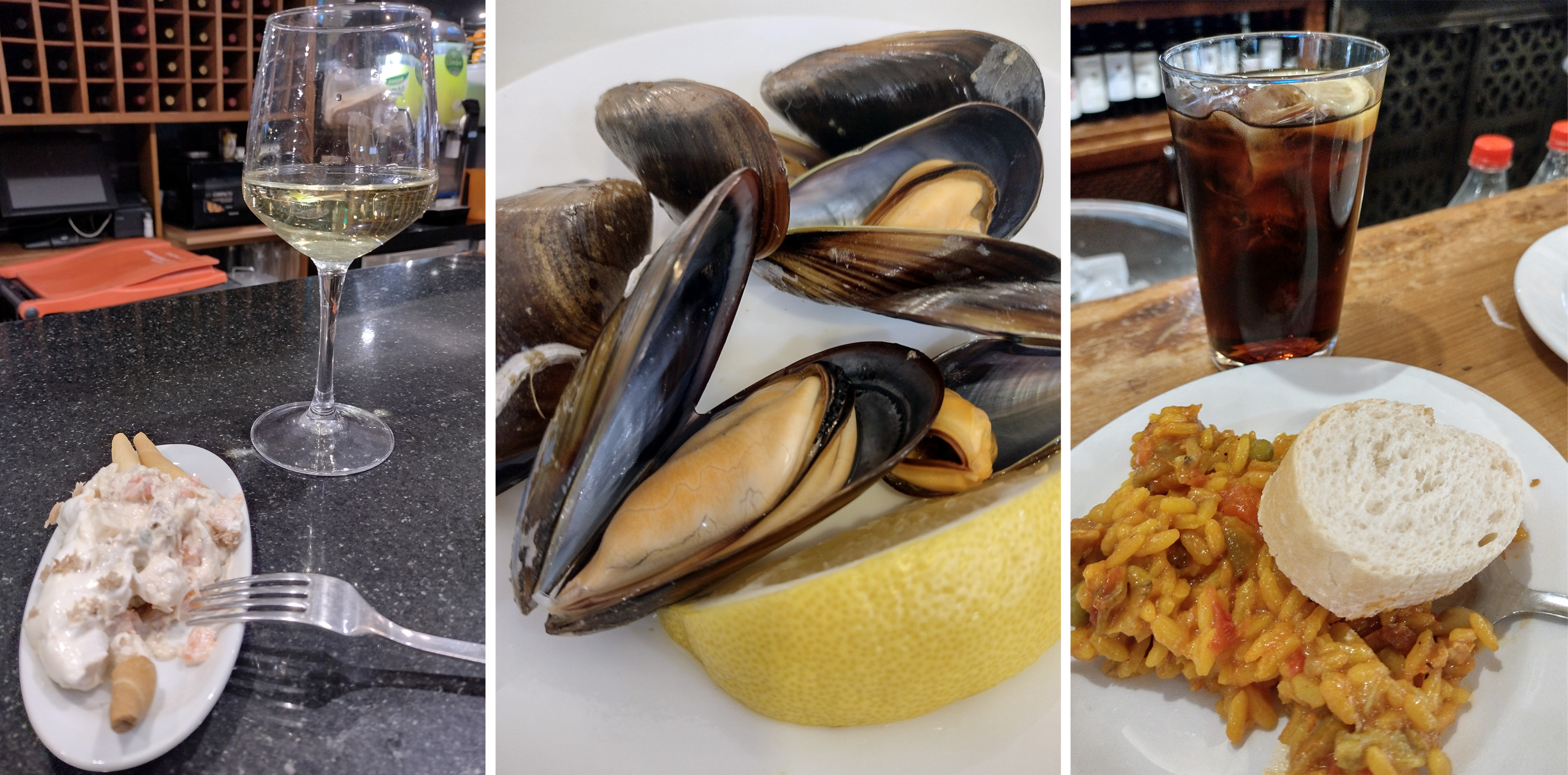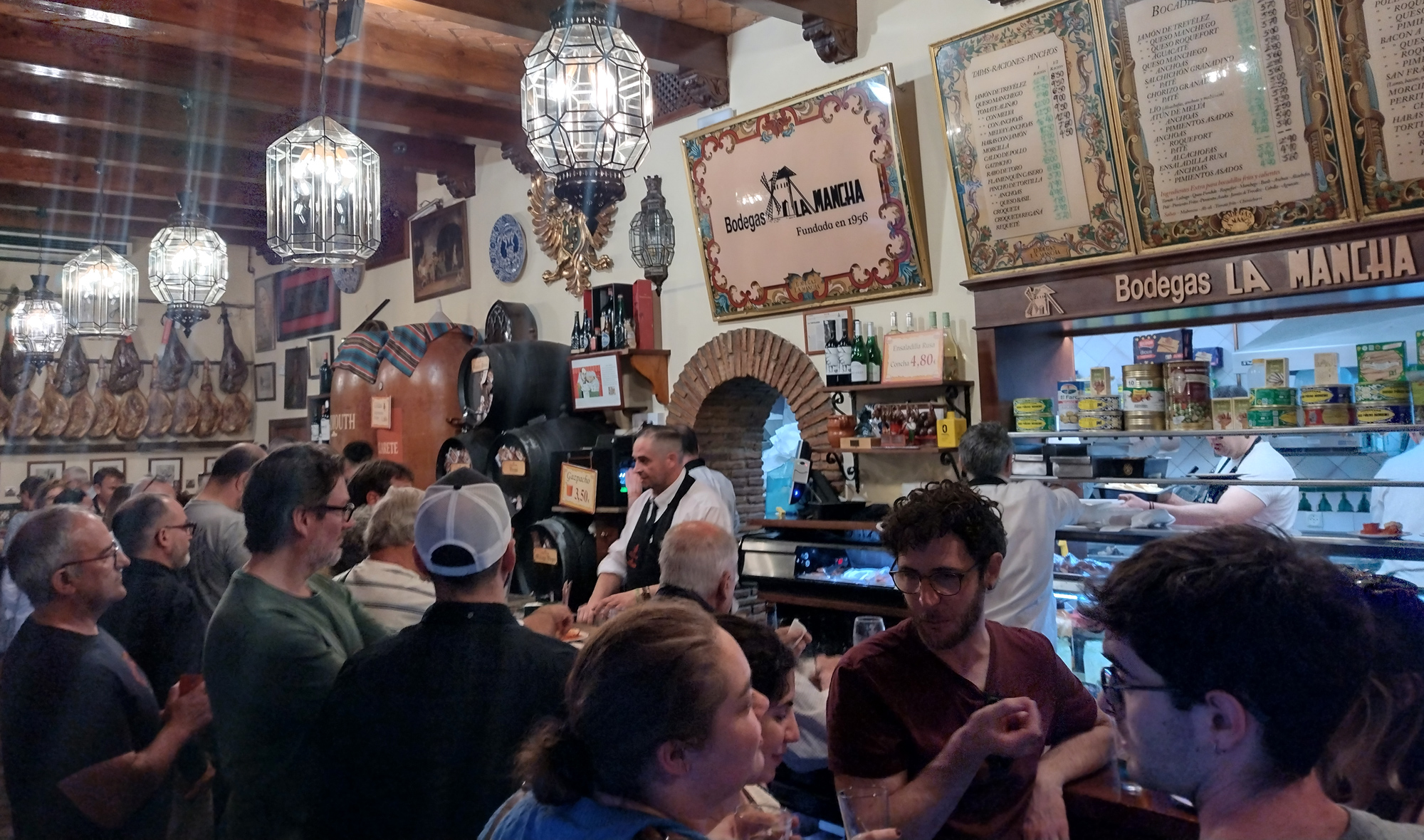
I should have written this AGES ago. Although intended for the groups I guide in Spain for Rick Steves, this basic advice should provide anyone with a good start. With over 25 years of experience navigating the ever-changing tapas scene, I hope there are enough beginner tips & tricks here to make the most of meals on your own. Remember: practice makes perfect. No one gets everything right the first time!
Caveat: This is a developing guide & will continue to grow over time with more info + more photos. It’s not easy searching through an archive of 75,000 pics, even when most are catalogued! I’ll be keeping this post in mind as I go out & add/update accordingly. The idea is to cover the basics here, not to provide a detailed explanation of every single exception to the rule… of which there are many. Discovery is part of the fun of exploring the world of tapas.
Origin
According to the Royal Spanish Language Academy, a tapa is:
a small portion of food which is served to accompany a beverage.
Meh. That rather dry description fails to cover the spirit of going out for tapas. More than a portion size, I like to think of tapas as a lifestyle… filling not only your belly but also your soul. So how did this fun-loving tradition begin?
The tapa origin story probably has as many versions as there are actual tapas in Spain! While no one agrees to the exact time or under which king’s reign that tapas began, we’ll stick to the simplest explanation.
Consider the bar scene during the time of Cervantes when he wrote Don Quixote: taverns of the early 1600s could be cramped & crowded, filled with travellers (and their animals) & without the best sanitary conditions. In order to keep flies out of patrons’ beverages, owners would cover —tapar— glasses with a small piece of cured ham or cheese. That practical solution was also savory & would keep customers ordering more… an ingenious idea that still works today!
Terminology & types
Tapa • Think of the tapa as a basic unit, the start point of a dining adventure. As a small portion of food, it is either served free with a drink in some bars while it is ordered & paid for in others. A tapa is considered a single serving for one person.
●
●
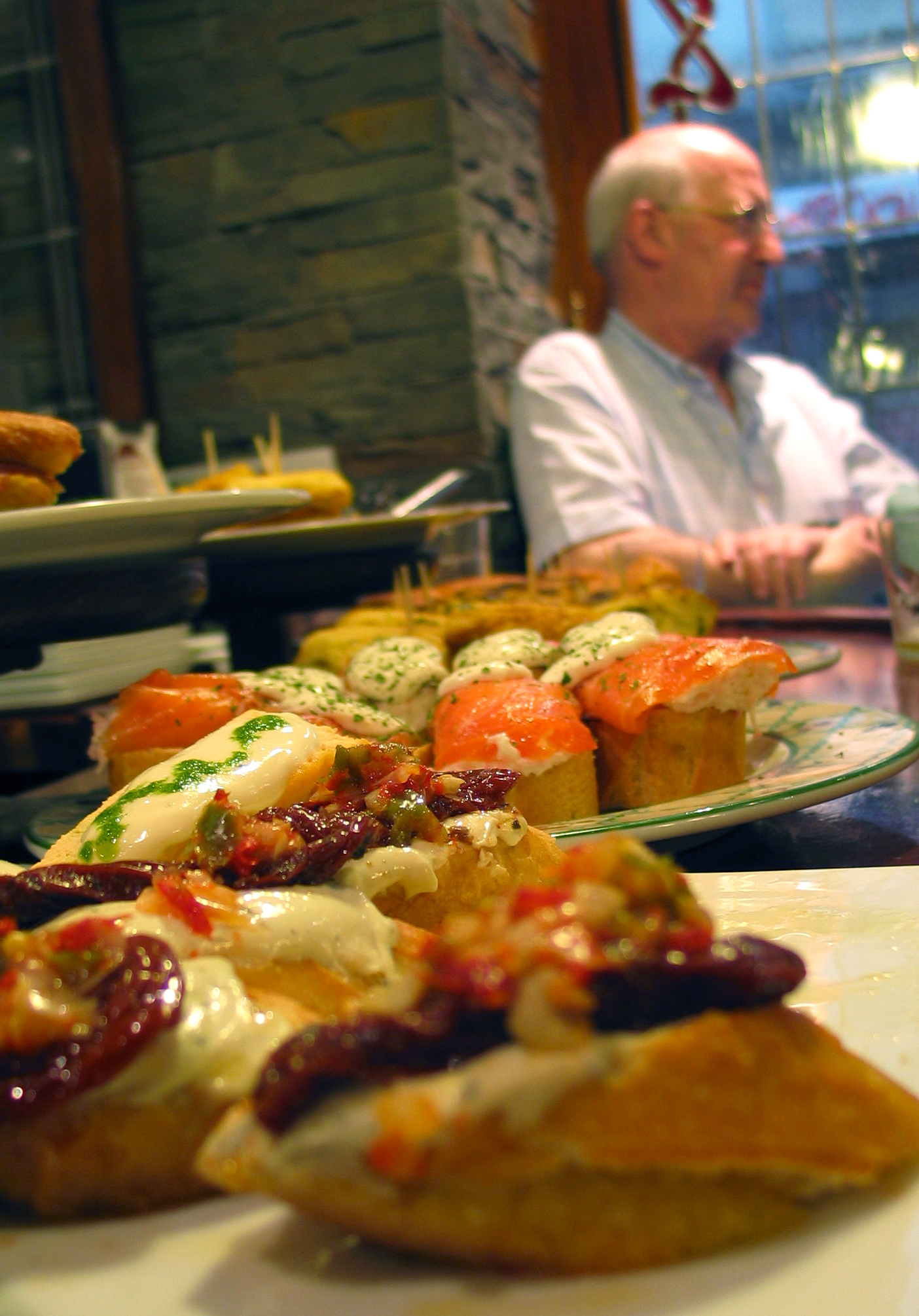
Pintxo • The Basque version of the tapa is usually more elaborate, served on a slice of bread with a toothpick holding all ingredients together. Bars may have many pintxos on display at once, & customers take what they wish. Typically at a fixed price, toothpicks are counted to calculate the bill. This practice is also popular in Barcelona.
●
●
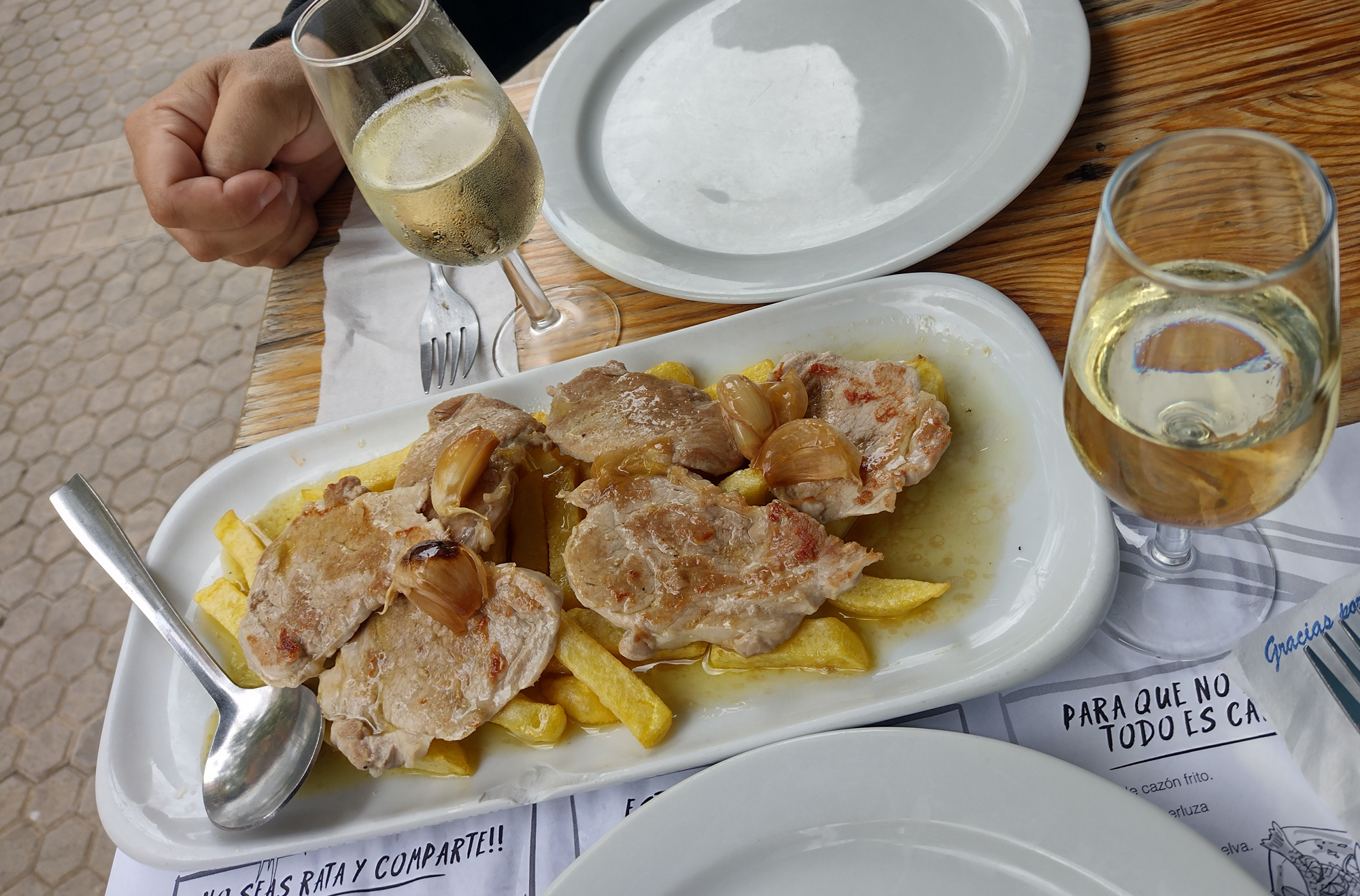
Ración / Media • A larger portion of a tapa, meant to be shared among several people from a single plate. The media or “half” option isn’t always available but makes good eating for two people… especially if you don’t want to commit to so much food.
●
●
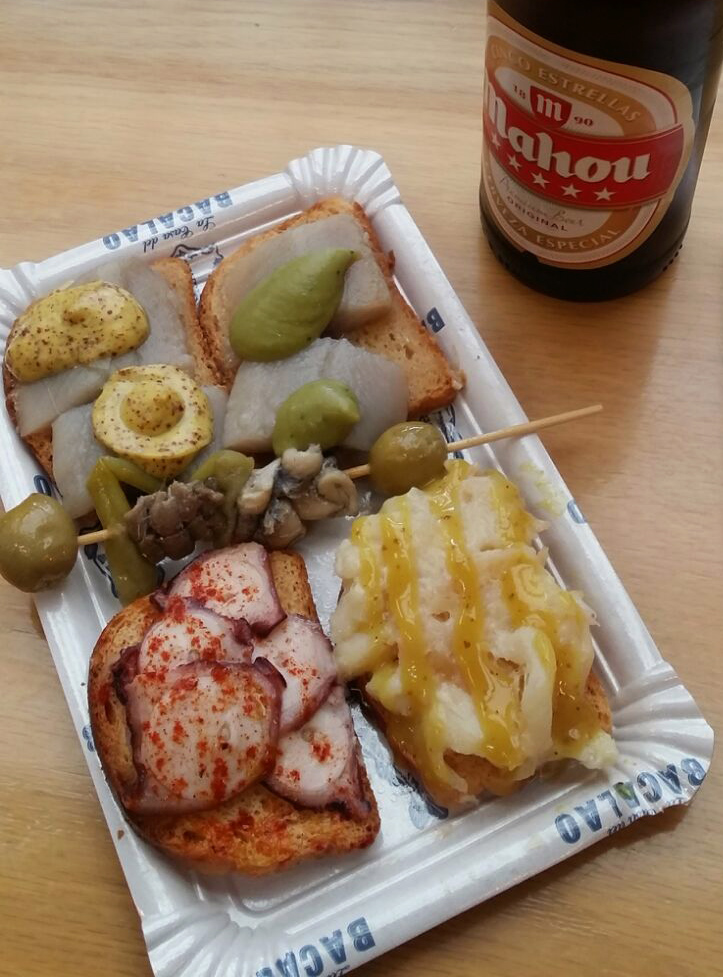
Tosta / Canapé • Served on a toasted slice of bread or puff pastry, these fancy bites showcase special products. Spreads, patés, cured fish or cream cheeses are often served this way.
●
●
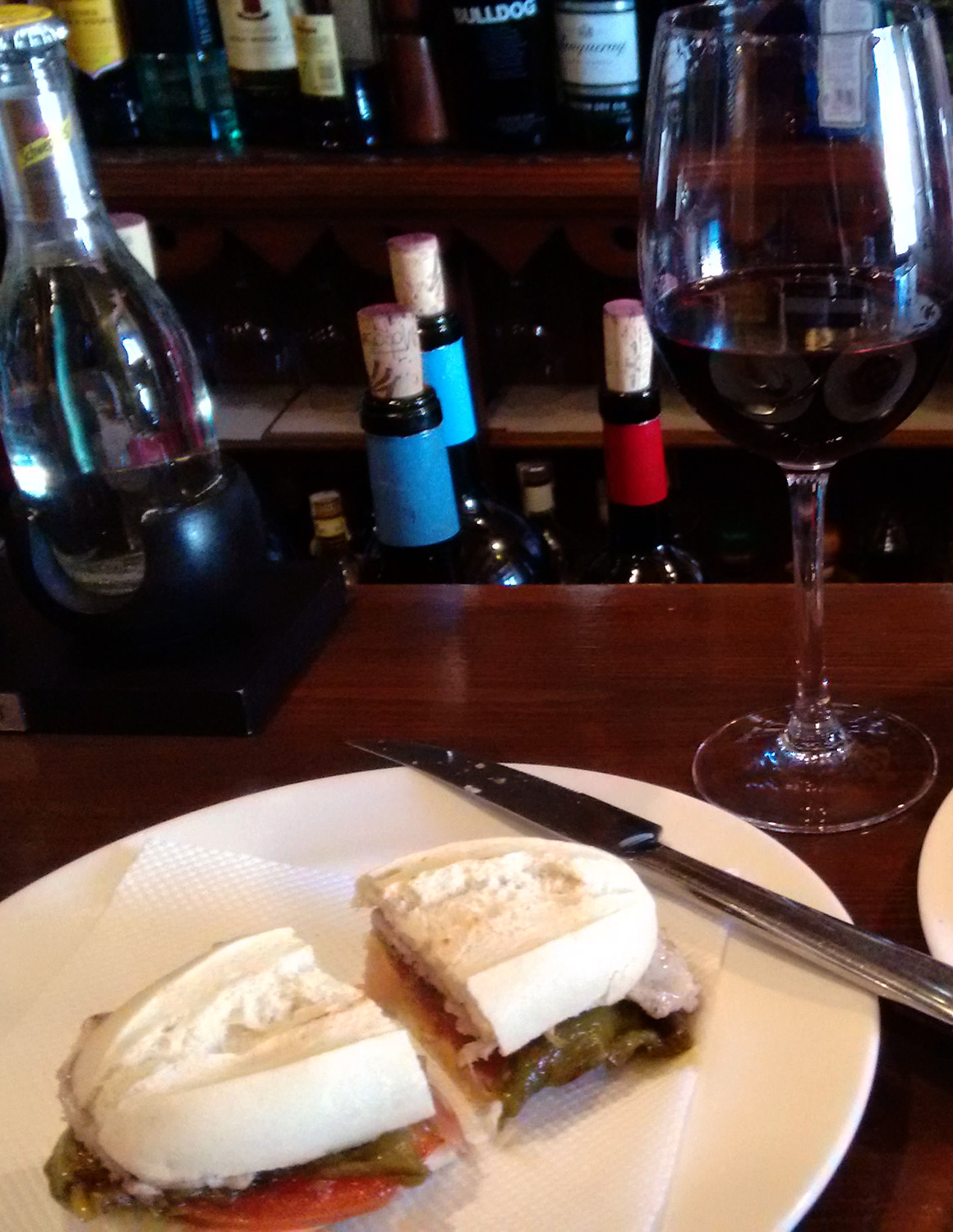
Montadito • Deriving from the word montar which means “to get on” or “to ride”, all kinds of goodies from meat to veggies ride inside these miniature sandwiches. These may be a bit larger than the standard tapa & can be for a single person or sharing. Whatever floats your boat. Montaditos are staples of the Sevilla tapas scene.
General rules
Standing vs. seating • Seating is not always an option, especially in popular spots. If you are lucky enough to get a table, wait staff will come over to take your order. But consider bellying up to the bar during a tapa crawl. It’s amazing how comfortable the bar lean can be, conservations with neighbors are struck up easily & standing often makes for a quicker exit; drink, chat, eat & move to the next place.
Whether seated or standing, that’s your spot; don’t move around. Your bar bill is anchored to your location, so switching places can confuse wait staff. Only do so at their suggestion or by requesting politely.
Bar stools are sacred since there are so few… if you leave one unattended, someone will snatch it up quickly! Pro tip: Need to use the WC? Have a friend place their foot in the footrest. That’s an understood sign that the seat is taken.
Outside seating or terrazas often come with a surcharge; that view doesn’t come for free. Spaniards love to play musical chairs and tables, rearranging seating as loudly as possible. Also as of 2025, smoking is still allowed outside establishments so you may be downwind of cigarette smoke. Scout out the crowd before choosing a spot if smoking bothers you.
●
●
Bar real estate • Crowded bars can be tricky to navigate. A good method to obtain precious space to rest your drink is to hover near someone or a group of people that have just asked for the bill. Stick close & as soon as they depart, swoop in to claim the countertop. Don’t be shy because competing clientele won’t be.
●
●
Attracting attention • Bar staff can be few & far between at times, as well as very busy waiting on several people at once. Greet them as they approach —a simple hola or buenas will suffice— then place your order. Keep it simple & service will be prompt… but do not expect a US-style greeting or chit-chat. Staff have lots of people to serve & often skip the pleasantries.
●
●
Use the same waiter • Once you’ve made contact, that server is yours for the duration of your stay. If you need a refill for your beverage or would like to order food, always communicate with the same person… he or she manages your tab & no one else.
●
●
Drinks first • Ordering often occurs in several stages. A good way to speed up the process is knowing the steps: drinks >> food >> refills >> then the bill. On first contact, bar staff usually want to know only your drink order. That gives you precious time to look at the menu. Pro tip: If you know your drink order before even entering an establishment, then you’re one step ahead of the game.
●
●
Fuera de carta • As your drinks arrive, servers may suddenly get chatty. They are likely listing off a number of tapas made that day which do not appear on any pre-printed menu. These same tapas may also be listed on a chalkboard somewhere behind the bar. Try a couple because they’re the most unique. Offering these limited-time-only tapas keeps regulars coming back for more & gives kitchen staff a chance to flex their culinary muscle.
●
●
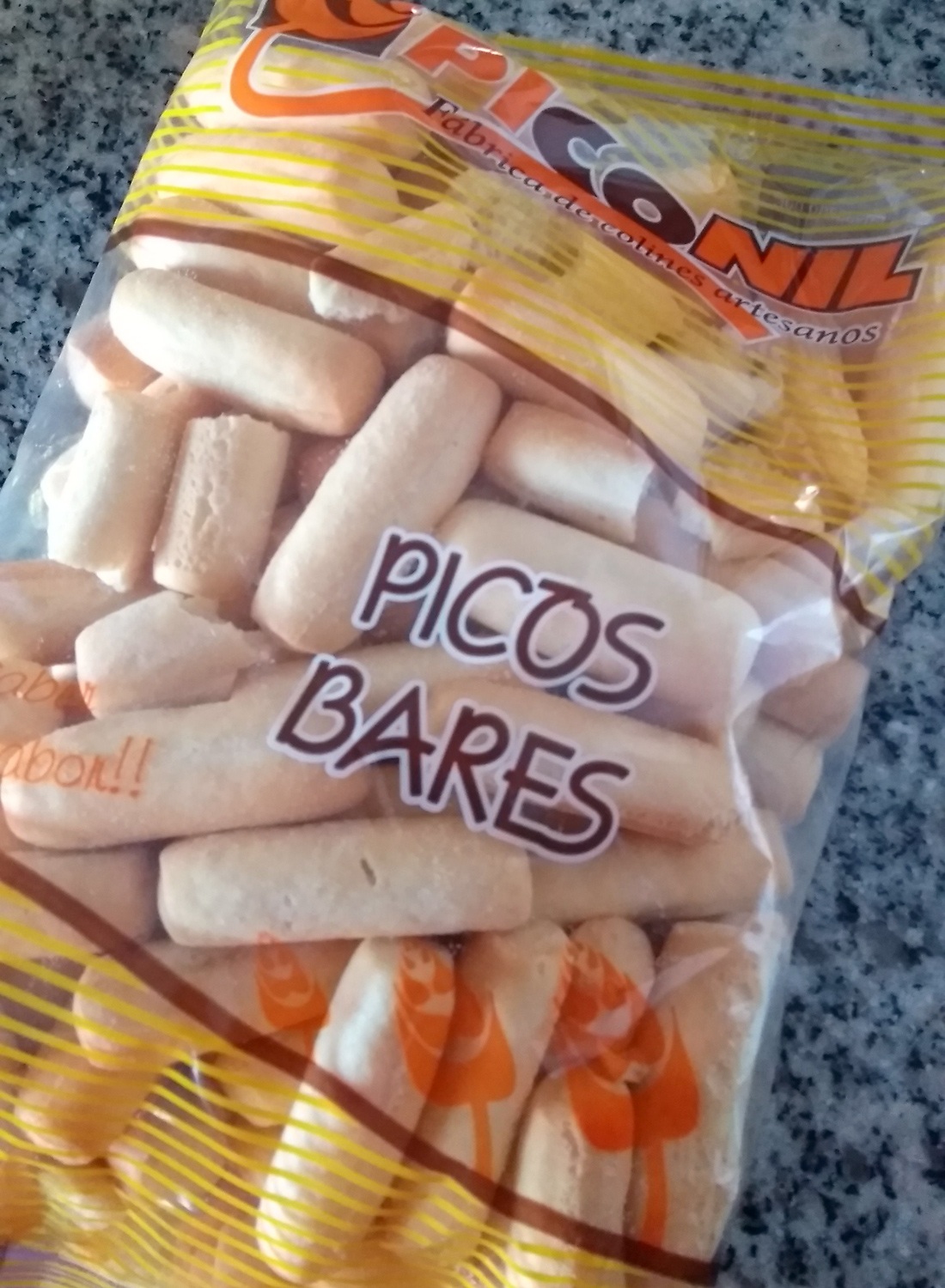
Service charge • Picos are akin to a cross between a cracker & a breadstick, made in a variety of shapes & served in small packets. Handy to push a bite of ensaladilla rusa on to your fork, they don’t come for free if served separately in a basket. Many Spaniards considered charging extra an affront to their sensibility at first —how could you eat without bread or picos?!— but the practice is now widespread & typically adds a euro or two to the bill.
●
●

Permission to litter? • Ah, how times have changed. Patrons would throw napkins & assorted trash on the ground in the past, but most bars now have trash cans installed… or people just refrain from old habits. If trash disposal isn’t in sight, just crumple up your napkin under the rim of your plate. However, if you see others do it (or a handy trough beneath the bar) then the practice is still accepted… just don’t be the first!
●
●
Treat the gang • Going out for tapas is meant to be as much of a social experience as it is for dining. Friends rarely stay in one spot, & everyone is expected to share food. Not worth nitpicking over exact consumption, one person will pick up the tab at one place while someone else pays at the next spot or the following evening. Consider the occasional overpayment as an entertainment fee or a kind gesture; it all truly comes out even in the end. Bar staff will rarely divide checks or accept separate payment.
If you know you’ll be out for awhile, consider starting a bote or kitty. Everyone puts in the same amount, then at the end of the evening leftover money is divided evenly. Works wonders!
Now that you’ve had your fill, it’s time to get the bill. Grab your waiter’s attention & ask for la cuenta, or if far away just act like you’re writing in the air. They get the idea, & you’ve saved them a trip over. Some bars still keep tabs by writing in chalk on the bar in front of you… sadly this charming practice is less & less common.
Rounding up or leaving one or two euros as a tip is fine… even no tip for small checks or payment with credit card is acceptable these days. Spaniards are not big tippers, but servers always appreciate a small gratuity.
While there aren’t many rules to follow, the system can be unfamiliar & confusing at first. How did your first time ordering tapas go? Any other tips to share? Let me know in the comments section below.
